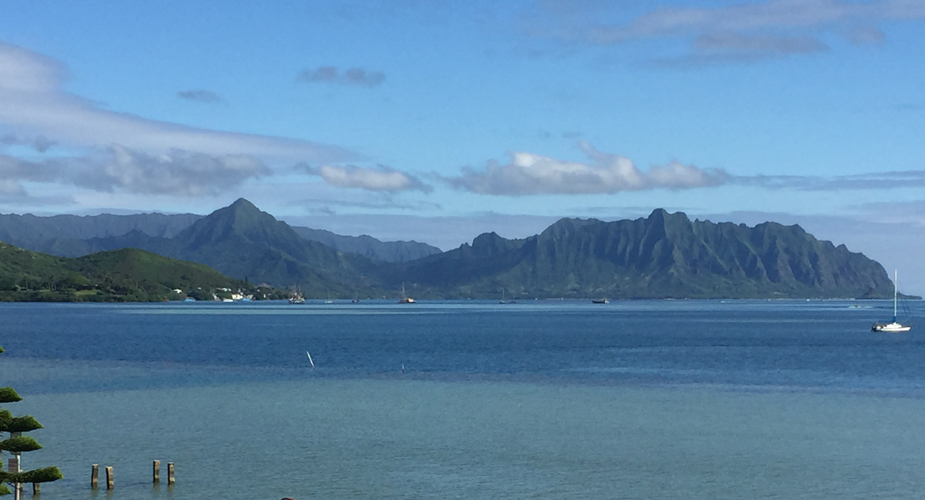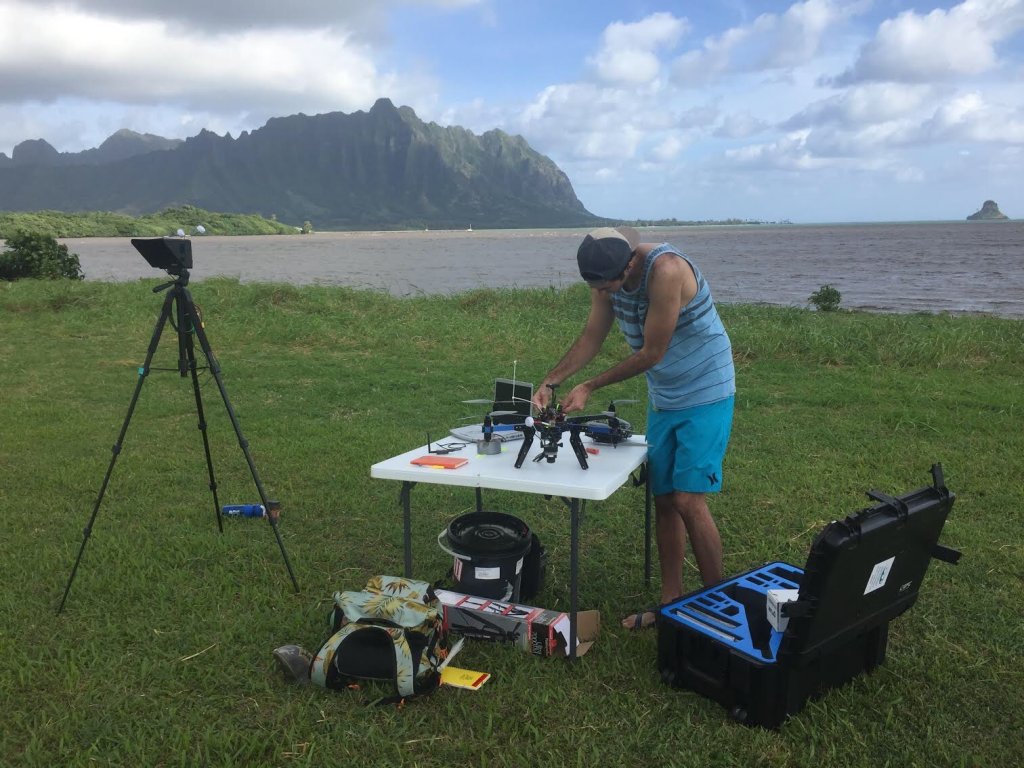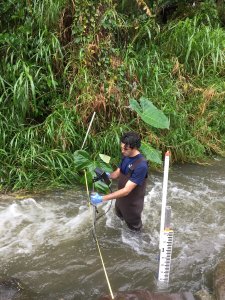Wai, from Mauka to Makai
by Michael Mathioudakis

It is a peaceful Saturday morning on windward O‘ahu as my co-pilot Daniel and I wait for the sun to peak over the horizon. We are FAA-licensed pilots gearing up to fly our octocopter, an aircraft equipped with eight motors, extensive electronics, and a state of the art thermal infrared camera. This aircraft is over 100 years in the making, a machine that the Wright brothers would surely be proud of. To some, this aircraft might look like a playtoy, but for me it is the lifeblood of my research, a tool that allows me to fly below the clouds and collect thermal imagery of submarine groundwater discharge.

I am not a pilot in the traditional sense, but a pilot of the future. The transition to an automated world is already underway, and drones are at the center of this revolution. I am a geologist, and though geology is often thought of as a pretty traditional field of study, innovation is everything. Satellites, submarines, and now drones are essential tools in the Earth sciences, giving us a better understanding of our home, the Earth, and the impact we have on it.
I use drones to study groundwater. Groundwater is hidden in the soil and rock beneath our feet, but it makes up nearly 2% of the water on Earth, over 5,000 times more water than is in rivers! Groundwater moves very slowly through the soil and the rock, but eventually flows into rivers or the ocean. Groundwater that flows into the ocean is referred to as submarine groundwater discharge (SGD). Standing on the beach with your feet in the sand, you can sometimes feel cool water running through your toes; this is submarine groundwater discharge. SGD plays an important role in Hawaiian culture, as traditional Hawaiian fishponds were preferentially placed in areas where the ocean water was naturally fed by fresh, nutrient-rich SGD.
Because it flows through the ground en route to the ocean, groundwater picks up nutrients from the soil and rock. The ocean water around Hawaiʻi is naturally nutrient-depleted, so submarine groundwater discharge provides a vital source of nutrients to the coastal ecosystems. However, human activities such as agriculture and waste disposal can add excess nutrients and other contaminants to groundwater which can cause invasive algae blooms and deplete coastal waters of oxygen.

Because SGD flows from within the ground directly into the ocean, it is difficult to detect and measure. Most Hawaiian groundwater comes from rainfall at high elevations and remains buried beneath the surface, so it is typically colder than ocean water, which is continually heated by the sun. Measuring coastal water temperatures with thermal infrared imaging allows easy detection of cold SGD. Because SGD is essential to Hawaiian coastal ecosystems, but a potential source of harmful contaminants, identifying locations of SGD is crucial for land-use planning and coastal resource management.
As I look out over the waters of Kāne‘ohe Bay, patiently waiting on the sun to illuminate the sky for a safe drone flight, the beauty of Hawaiʻi is never more clear. My home is heaven on Earth, but with great beauty comes great responsibility. Hawaiʻi is the most isolated island chain in the world, and O‘ahu, the third largest island in the chain, contains nearly 80% of the population. Critical management and care of O‘ahu’s natural resources are of utmost importance if the one million of us living on this island are to continue calling it home. I am happy to play my part, and hopefully my little machine can help us take a small step towards understanding the ocean while protecting and managing the resources it provides.

